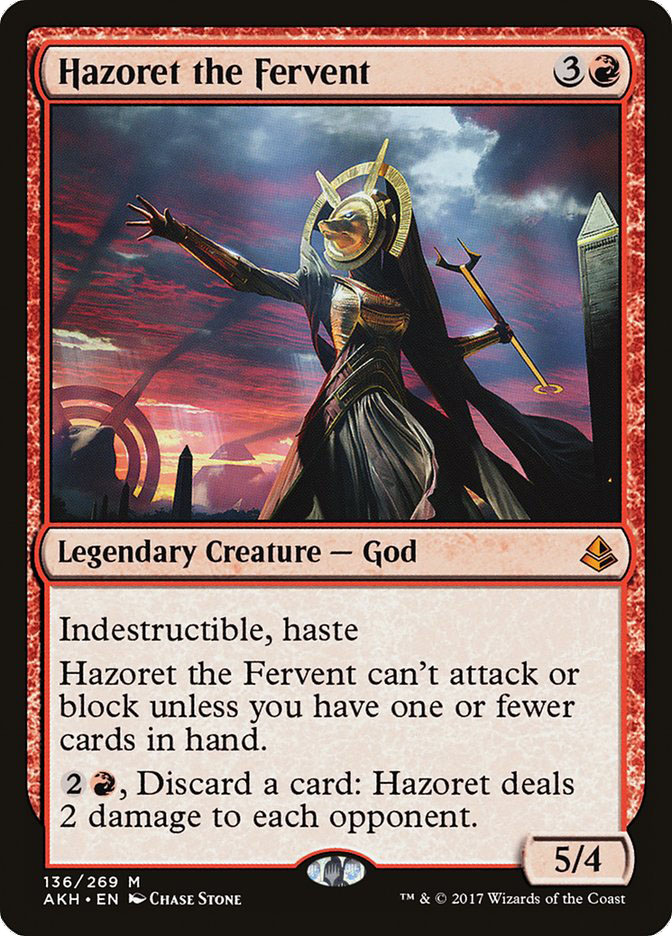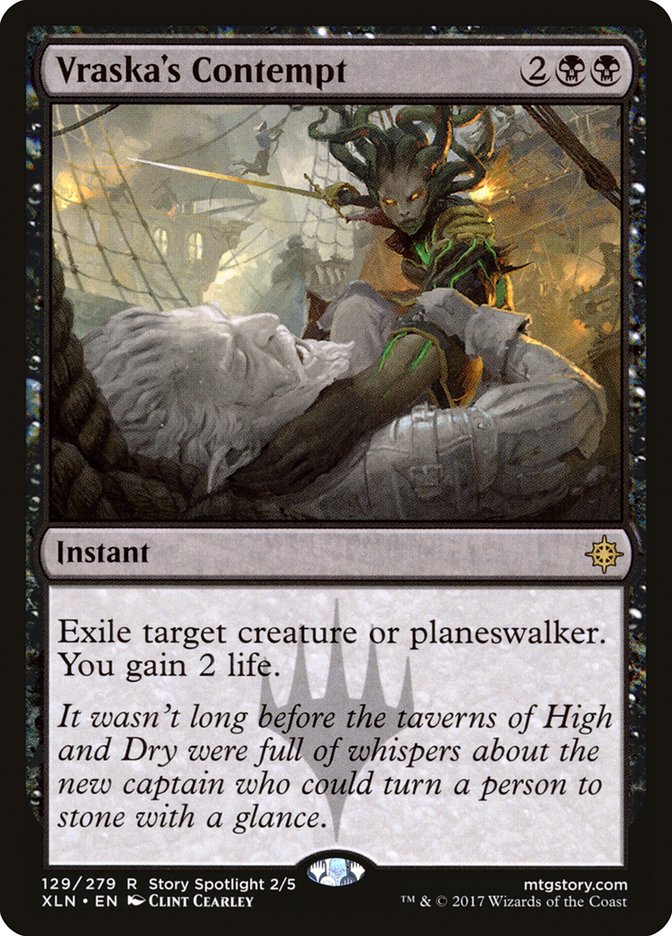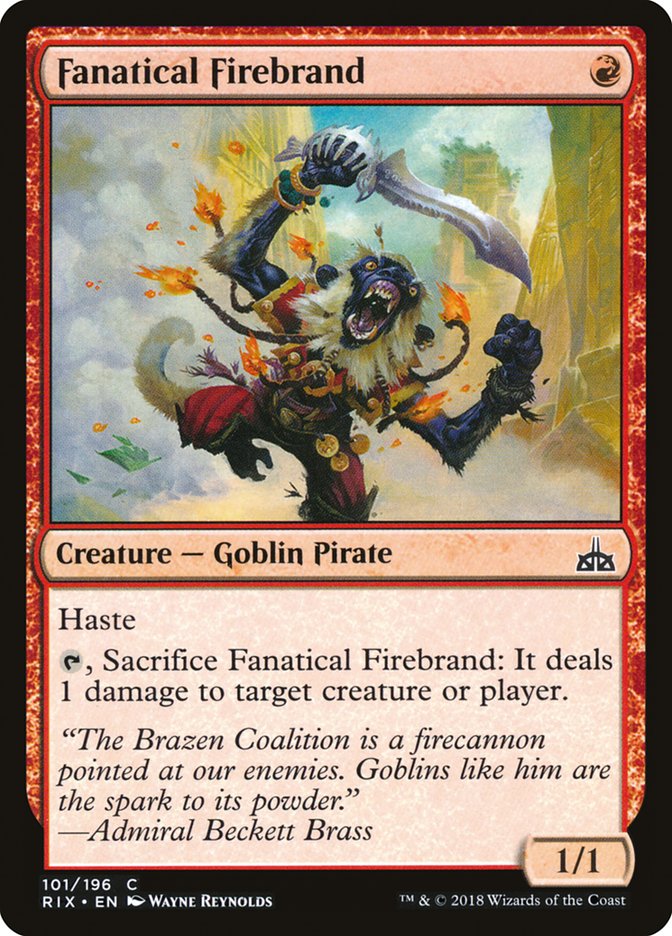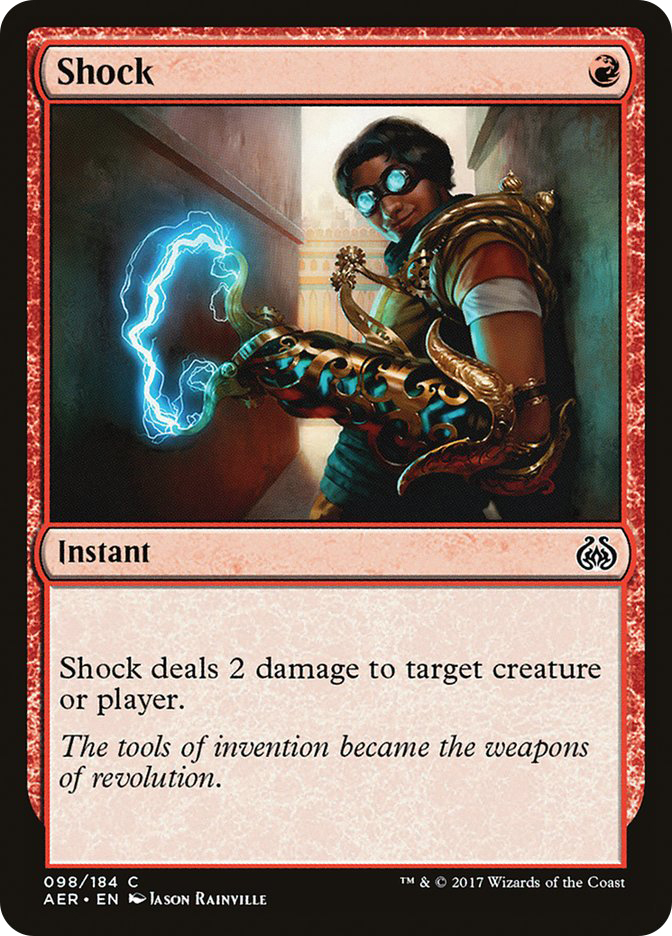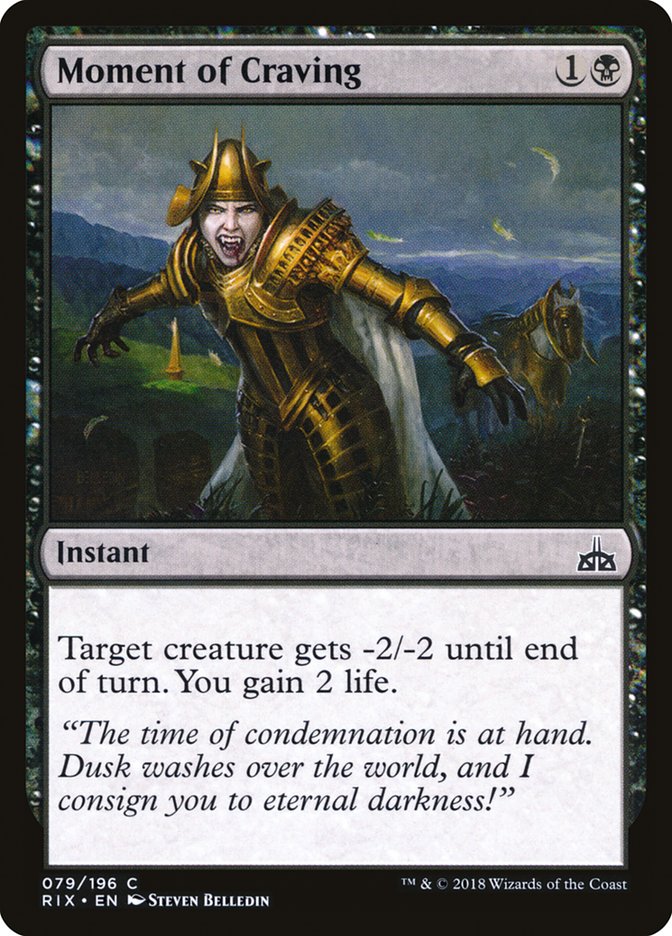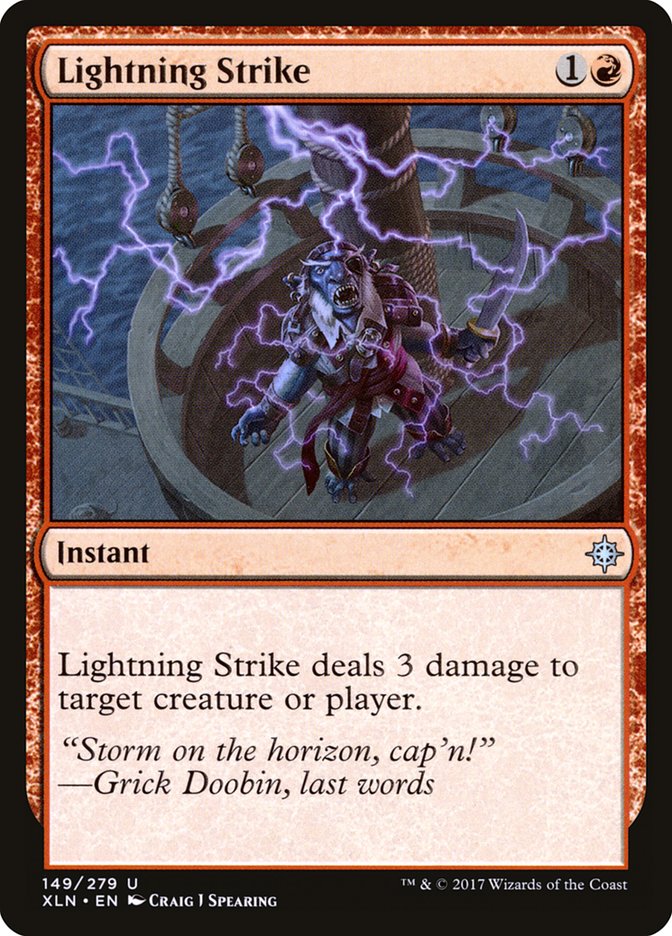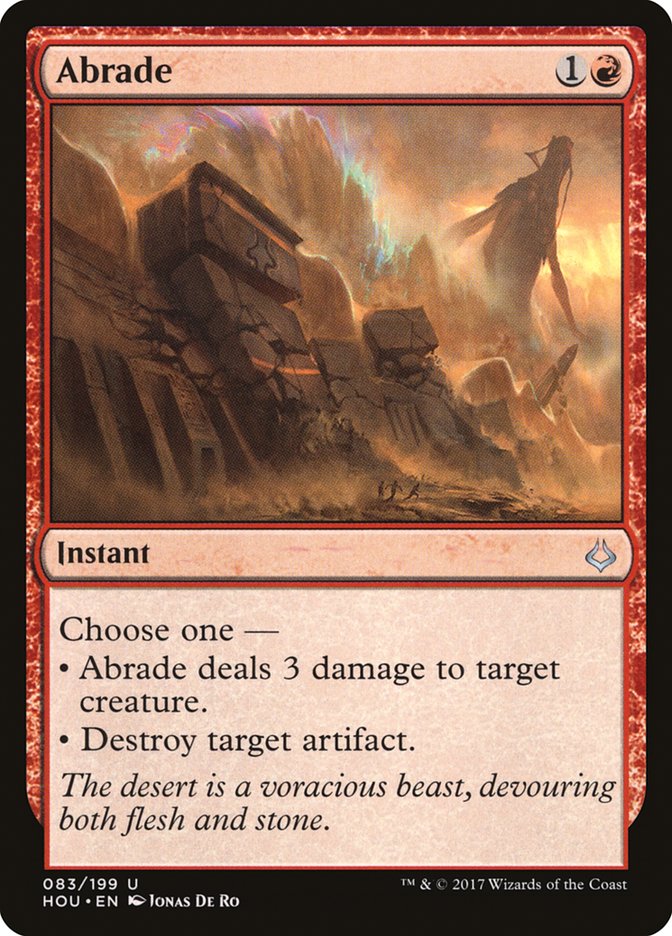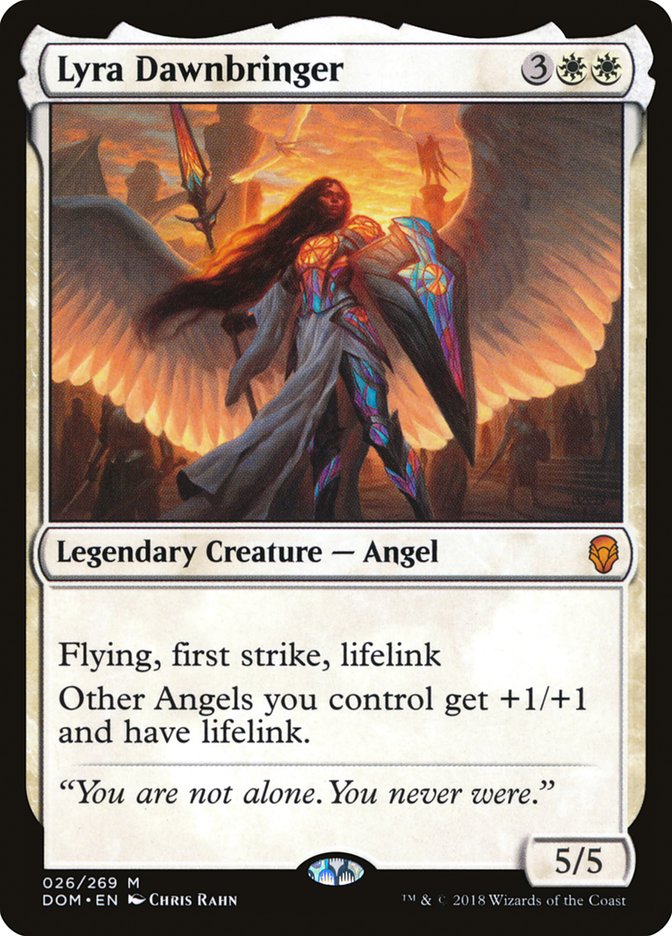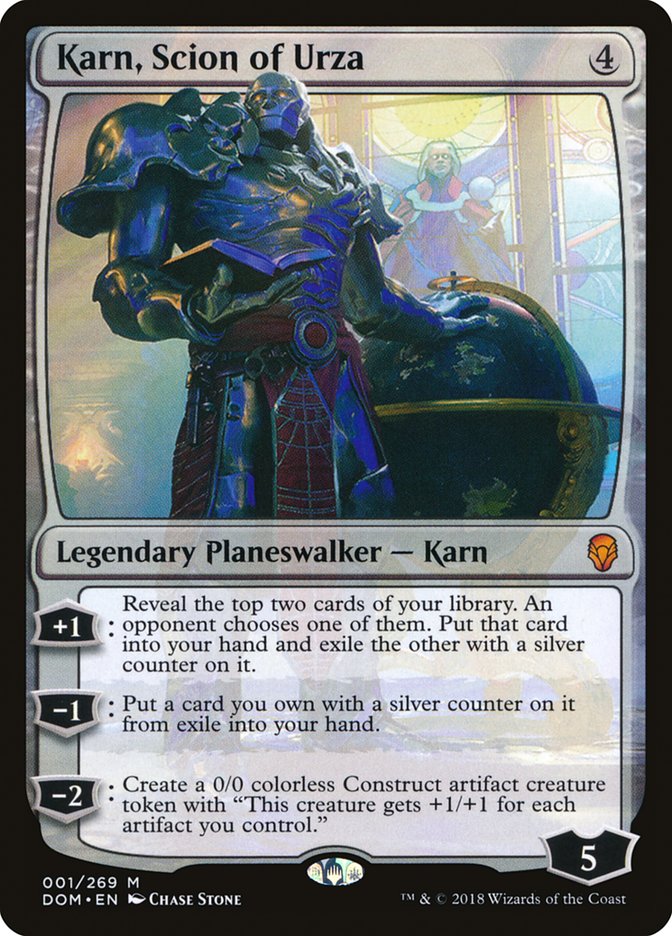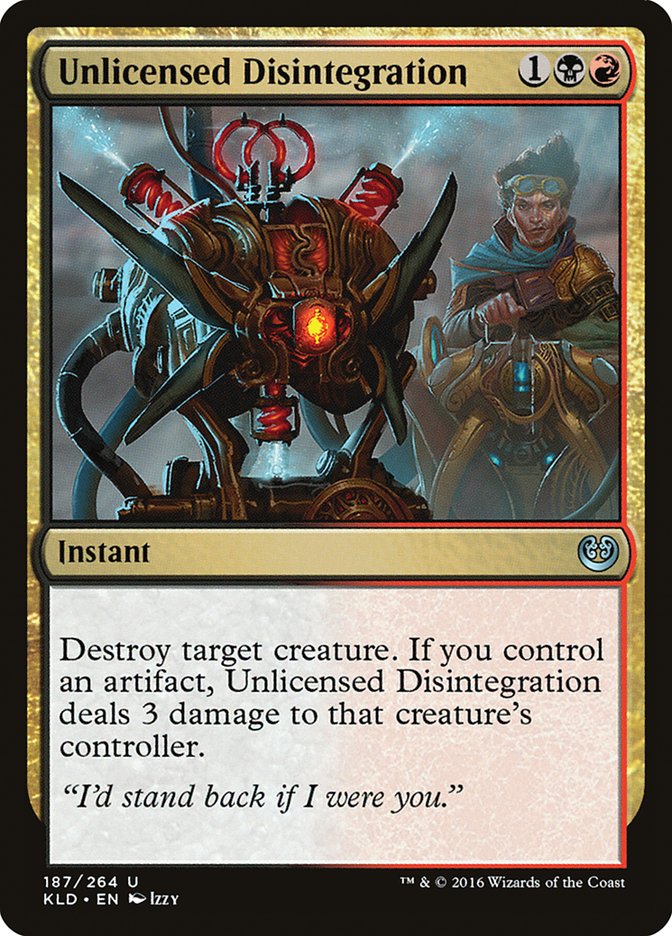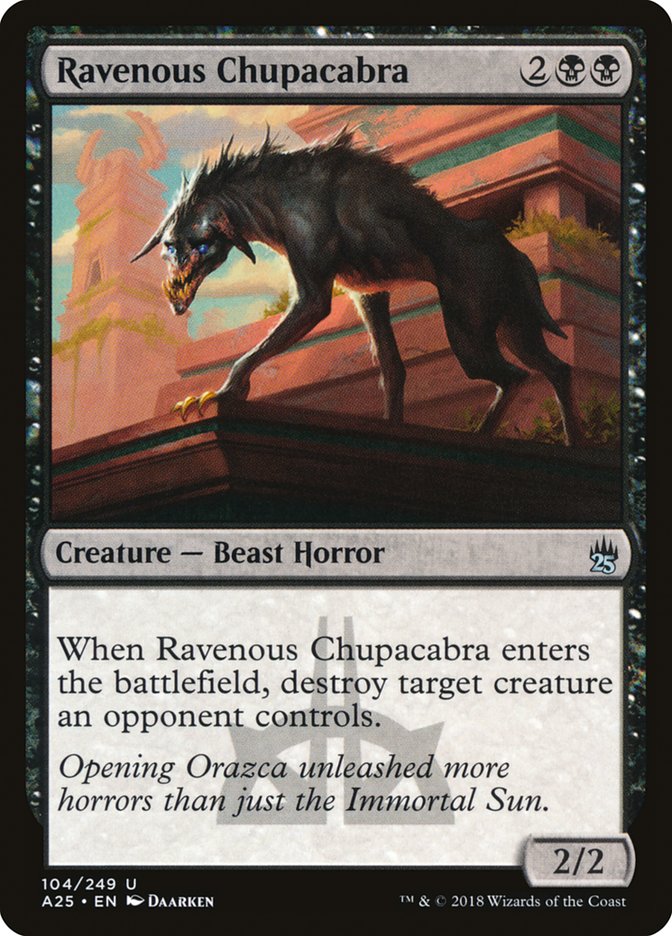Every format has its guidelines.
In Modern, creatures with four toughness are much more durable than ones
with three or less due to the prevalence of Lightning Bolt. In Legacy, you
need to be careful about what non-basic lands you choose to play or fetch
early, lest you be on the wrong side of a Wasteland. These are things we’ve
learned from playing those formats over the years, but Standard moves more
quickly.
In Standard, the defining guidelines tend to revolve around the format’s
most common threats, as well as the format’s most common answers.
Until the release of Dominaria, Standard was dominated by a pair
of Gods: The Scarab God and Hazoret the Fervent.
If your deck couldn’t either interact with The Scarab God/Hazoret or go so
far over or under them that they didn’t matter, you were going to have a
bad time. Each card presented a powerful and unique threat that was
difficult to answer, ended the game quickly, and required almost no help
from other cards to be good. The conundrum with both cards is that they’re
“must answer” threats, but are also very difficult to answer.
The result of this was easy to see.
Vraska’s Contempt, a flexible but very expensive removal spell that’s
usually worse than the rarely played Utter End, ended up being one of the
best cards in the format. This is in large part due to its ability to take
down the two best threats in the format at instant speed. When paired with
Fatal Push to deal with early creatures, it’s not hard to see why black was
one of the most popular colors in pre-Dominaria Standard.
The removal in any given format often dictates what types of threats will
do well, and while The Scarab God and Hazoret are so powerful that they’re
worth playing even when Vraska’s Contempt is popular, most threats need to
be looked at through the lens of how they interact with the format’s
removal.
Let’s take a quick look at pre-Dominaria Standard’s important
flash points:
Two+ Toughness
Both Walking Ballista and Fanatical Firebrand eat one toughness creatures
for breakfast, making them a bit more of a liability than they would
normally be. Any one toughness creature will also fare very poorly against
any deck making tokens.
Three+ Toughness
The main removal spells that deal two “damage” are Shock and Moment of
Craving, and both are less popular than the other options. Still it is
something to consider; it’s nice that your opponent can’t Shock your Kari
Zev, Skyship Raider in a Mono-Red mirror.
Four+ Toughness
The most important red early removal spells – Lightning Strike and Abrade –
deal three damage for two mana. This means against any red deck, be it
aggressive or more controlling, it’s going to be difficult to rely too
heavily on any creature with three or less toughness. As a result, any
creature that costs more than two mana and has three or less toughness may
end up putting you down mana in the exchange. This is a good reason to
favor something like Contraband Kingpin over Gifted Aetherborn if you’re
looking for an anti-Mono Red Aggro card in your U/B Control sideboard.
Five+ Toughness
While Shock, Lightning Strike, and Abrade are red’s early removal spells,
red’s bigger guns – Chandra, Torch of Defiance and Glorybringer – deal
their damage with the number four. This makes trying to tap out for any big
threat after turn four that only has four or less toughness a huge
liability, as the tempo swing from a Glorybringer or Chandra coming down to
kill your large threat and still be on the battlefield is backbreaking.
Three+ / Five+ Converted Mana Cost
Fatal Push is one of the best removal spells printed this decade, being
fantastic in both the early and mid game as way to deal with fast starts
and middle of the road threats for an astoundingly low cost. Threats that
cost three or more mana are somewhat resistant, but five or more is the
Magic number to completely ignore the best removal spell in the format.
Given their resistance to all but the biggest removal in the format, it’s
not hard to see why The Scarab God and Hazoret were so ubiquitous.
A Whole New World
However, now that Dominaria is here, everything has changed.
We have a few new removal spells and flash points, as well as a host of new
(and old!) threats that are rising to prominence because of how they line
up with the answers currently being played. The guidelines are shifting,
but they’re always a moving target because of the cause and effect from
each shift.
I’ve spoken at great length about Goblin Chainwhirler already, which
smashes the hopes and dreams of any creature with one toughness that wants
to see play in the format. Looking over the top decks from#SCGATL and #SCGBALT, there are
very few one toughness creatures seeing play – this is no accident. Playing
a lot of one toughness creatures or trying to go wide with any sort of
token strategy is folly as long as Goblin Chainwhirler remains a heavily
played card.
The issue is that Goblin Chainwhirler is mainly just a Mono-Red Aggro card
and Mono-Red Aggro has a new enemy.
Perhaps one of the biggest breakout cards over the last two weeks has been
Lyra Dawnbringer, which is essentially just Baneslayer Angel version 2.0.
Anyone who played back when Baneslayer Angel was legal remembers how
unbeatable she was against aggressive red decks and not much has changed.
However, back then Baneslayer Angel had to contend with Doom Blade, Jace,
the Mind Sculptor, Terminate, Maelstrom Pulse, Path to Exile, and more. She
endured, but it was a rougher road.
A cursory glance at our removal flashpoint list from earlier shows that
Lyra has a much easier path to greatness: Five toughness avoids basically
all the important red removal in the format, while a converted mana cost of
five conveniently dodges Fatal Push. She’s even a legend to dodge Cast
Down!
As a result, Lyra Dawnbringer is currently one of the premier threats in
the format. She still dies to cards like Vraska’s Contempt and Cast Out,
but at barely any tempo loss. And if she is left unanswered… good luck.
Mono-Red Aggro currently plays almost no good answers to Lyra Dawnbringer,
and while there are options like Fight with Fire that could be
played, they’re narrow and reduce the power level of the deck as a whole.
Mono-Red Aggro, one of the most consistent and powerful decks in the format
for a while now, stands to be one of the first casualties of Dominaria Standard unless they can find a good answer to Lyra…
and fast.
White just gets all the fun new toys!
Move over Dovan Baan, step aside Narset Transcendent – Teferi, Hero of
Dominaria is the Azorius planeswalker we’ve been waiting for since we saw
the first multicolored planeswalkers a decade ago. Teferi really does
everything a control deck could ever want, and while he is exceptional
because of his ability to generate mana and draw cards, what truly pushes
him over the edge is how flexible he is when it comes to removing
permanents from the battlefield.
If Teferi wants it gone, it’s gone. There’s no restrictions on power,
toughness, mana cost or card type, it’s just gone. That’s huge because of
how often decks try to overload control decks with a variety of difficult
to answer permanents. Giving a control deck such a versatile tool is big
game.
It’s no coincidence that the entrance of Teferi, Hero of Dominaria into the
format has happened at the same time that The Scarab God is suddenly
nowhere to be found.
While a bit overrated in general, people are starting to realize that Karn,
Scion of Urza is much more powerful as a token making machine that can
occasionally draw cards rather than a typical planeswalker card draw
engine.
With all the powerful Kaladesh and Aether Revolt
artifacts still available in Standard, we’re starting to see a resurgence
in cards like Scrapheap Scrounger and Heart of Kiran alongside Karn, as
well as some of the usual suspects like Toolcraft Exemplar, Walking
Ballista, and Inventor’s Apprentice. Karn is even taking things a step
further, providing support to wilder things like
Construct Tribal
and the various improvise cards that never really got there.
Karn is powerfully opening a lot of doors that haven’t been opened in a
while, and doing so at a low and easy to manage cost. It’s also really
freaking hard to take the big man down, as five starting loyalty is absurd.
If you can’t properly pressure a deck that is playing Karn or answer a Karn
directly, you’re going to struggle in Dominaria Standard.
With the biggest new threats covered, let’s turn to what new removal enters
the format and where the new guidelines get drawn.
Seal Away gives defensive white decks something they’ve been lacking for
quite a while – a good two mana removal spell. I went as far as playing
Aether Meltdown in my U/W Approach deck a while back and that card sucks!
Seal Away deals with most early threats, as well as the format’s bigger
threats like Hazoret and The Scarab God. Doing so at instant speed while
also playing amazingly well with Teferi instantly bumps Seal Away up to the
highest tier of defensive removal spells in the format.
It’s important to note what this does to our removal guidelines, as it adds
a new flash point:
Doesn’t need to tap to be good
If your creature is never tapped, your opponent can’t play Seal Away on it!
Brilliant!
This can mean creatures with vigilance, or just creatures that don’t need
to tap to be effective like Glint-Sleeve Siphoner, Walking Ballista, or The
Scarab God. Is it any wonder that Heart of Kiran is back in full force? One
of the format’s best removal spells can’t touch it and it plays awesome
with the format’s fancy new planeswalker.
Sometimes solving a new format is less about finding the great new cards
and more about finding the great old cards that became obsolete for reasons
that are no longer true.
Speaking of “great old cards,” Unlicensed Disintegration is another one
poised for a comeback.
Mono-Red Aggro decks don’t currently have a good answer to Lyra
Dawnbringer, but that doesn’t mean they can’t branch out a little.
Unlicensed Disintegration has proven itself many times in Standard, and now
with a specific role to fill it may be time to fire up the disintegrators
once again. If you can turn your opponent’s Lyra Dawnbringer turn from “oh
no I can’t win anymore” into “you spent five mana to take three damage and
not have a blocker lol, you’re dead” that sounds like a win to me.
Unlicensed Disintegration cares nothing for guidelines. If you want it
dead, it’s pretty much dead – end of story. The cost in playing Unlicensed
Disintegration comes in the deckbuilding phase, both in getting artifacts
in your deck and being able to reliably cast it.
Ah yes, Patrick Sullivan’s favorite Beast Horror.
A lot of fuss was made about Ravenous Chupacabra when it was first printed,
but the reality was that the market for “four mana black removal spell” was
pretty much monopolized by Vraska’s Contempt. Once again, answers for
Hazoret and The Scarab God were a necessity, and Ravenous Chupacabra didn’t
play well against planeswalkers, Glorybringer, or Rekindling Phoenix.
But you know what card Ravenous Chupacabra does play well against? I’ll
give you a hint… It starts with “L” and ends with “Dawnbringer.”
Creatures (29)
- 4 Llanowar Elves
- 3 Verdurous Gearhulk
- 4 Winding Constrictor
- 2 Rishkar, Peema Renegade
- 4 Glint-Sleeve Siphoner
- 4 Walking Ballista
- 1 Thrashing Brontodon
- 4 Jadelight Ranger
- 3 Ravenous Chupacabra
Planeswalkers (1)
Lands (23)
Spells (7)

And look at that, a deck with three copies of Ravenous Chupacabra won a #SCGBALT top 8 full of
Lyra Dawnbringer decks. It pays to be ahead of the curve.
They’re Coming For You
Every format has its guidelines, but if you try to circumvent the rules to
be skewed in your favor don’t be surprised when other players do the same.
If everyone is playing Lightning Strike and Fatal Push as their removal
spells of choice, Lyra Dawnbringer looks awfully appealing. However, what
happens when everyone goes back to playing Ravenous Chupacabra and
Unlicensed Disintegration? If you try to go back to playing Skymarcher
Aspirant or Bomat Courier, then Goblin Chainwhirler may rear its ugly head
again. No matter what you do, they’re always coming for you.
We’re in the infancy of Dominaria Standard and were going to do
this song and dance for the next few weeks while we figure out where the
format stands. If you want to win, it’s your job to be on the right side of
these exchanges. Identify which cards are good, identify how they fit into
the format, and then pick the ones that people aren’t prepared to answer.
It sounds so easy!



